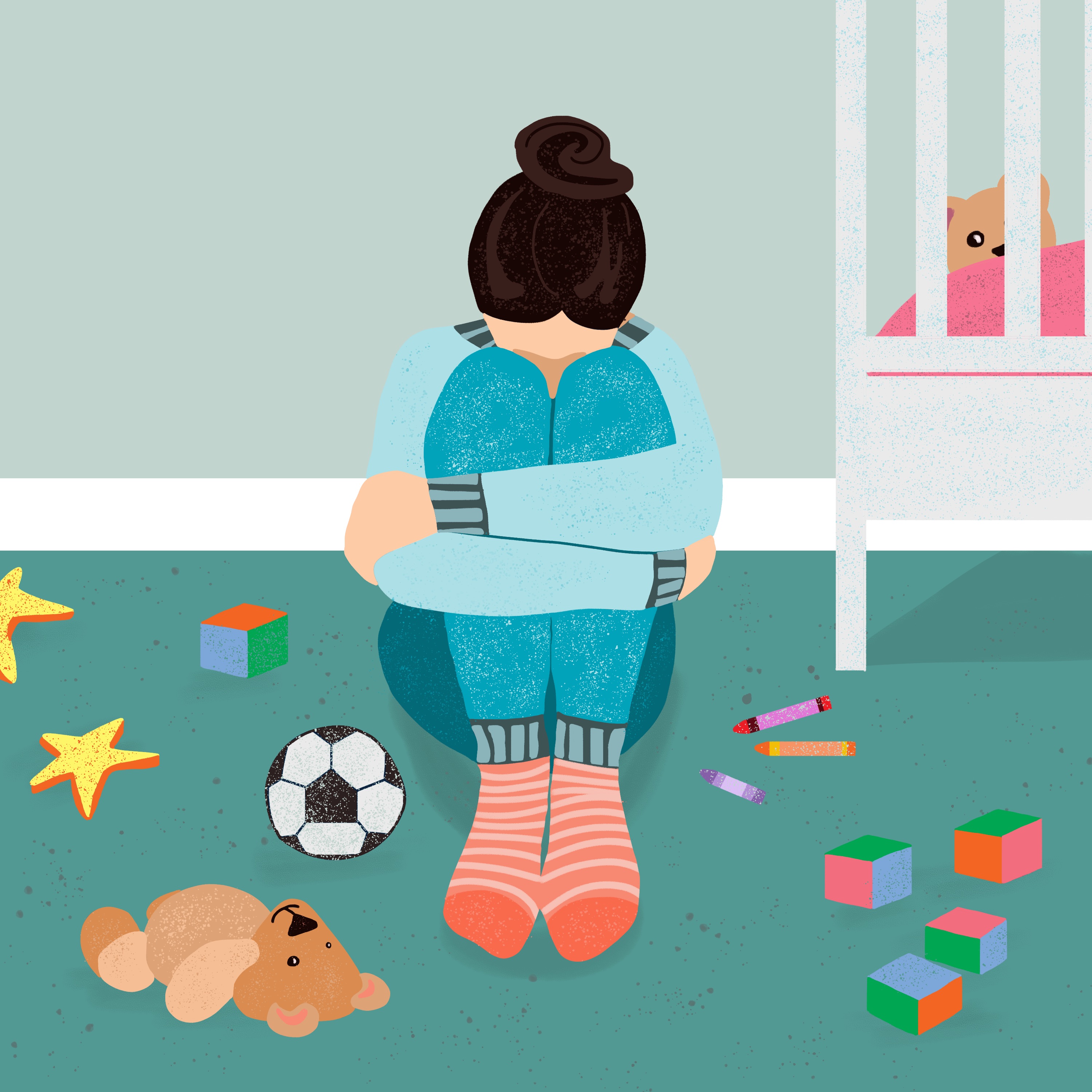
Meagan Gordon Scheuerman, 37, struggled with postpartum depression (PPD) after having her first child. Yet it took the Ponte Vedra, Florida mom nearly a year to recognize the symptoms.
"I never experienced mental illness before and had a very different idea of what it would look like," says the mom of two (ages 6 and 2) and author of "Babies Are The Worst: A Memoir about Motherhood, PPD and Beyond."
Scheuerman had always equated depression with sadness, but she didn't necessarily feel that way.
"I felt an overwhelming amount of nothingness," she recalls. "I didn't feel sad. I didn't feel happy. I didn't feel much beyond bitterness and anger…I never knew the full spectrum of symptoms that PPD can encompass."
It's common to assume that PPD is the same as typical depression—except that it happens right after you have a baby. And while there is a good deal of overlap, "when we talk about PPD, we cannot ignore the complex intersection between social, biologic, genetic, psychologic, hormonal, relational, and environmental factors," says Karen Kleiman, MSW, LCSW, founder and director of The Postpartum Stress Center in Rosemont, Pennsylvania, and author of "Good Moms Have Scary Thoughts."
Here's what experts know so far about the brain chemistry behind PPD—and what that means for you.
Your female hormones take a dive
Over the course of pregnancy, the amount of the female hormone, progesterone, in your body increases 10 times. Your body also makes 50 times more estradiol (a form of estrogen). But in the first two weeks after you give birth? Both those hormones plunge back to their normal levels. That massive change is believed to throw mood-regulating brain chemicals out of whack.
"The oxytocin release you get from breastfeeding can help counteract that," says board-certified psychiatrist Rupali Chadha, M.D., chief of medical staff at Metropolitan State Hospital in Norwalk, California.
But for some new moms, it's still not enough to get relief and PPD sets in.
You may have heard of brexanolone (brand name: Zulresso), the first drug approved by the Food and Drug Administration to treat PPD. Given as an IV infusion over a total of 60 hours, Zulresso works to get PPD in check by mimicking progesterone. Sounds hopeful, yet for now, it comes with a jaw-dropping price tag: $34,000. (Not to mention a required hospital stay.)
Your \”happiness\” chemicals go haywire
Around 50 years ago, researchers thought low levels of serotonin, a "happiness chemical" found in your brain, gut, and blood, were largely responsible for depression. While there's no doubt that serotonin helps regulate a host of body functions, like mood, digestion, sleep, and sex drive, "now we know it's many neurotransmitters working together which can cause an all-over dampening of mood," says Chadha.
That includes other chemical messengers linked to depression, such as gamma-aminobutyric acid (GABA) and dopamine.
"If your brain is susceptible, for whatever reason, when estrogen levels lower, you can have a true brain depression," Chadha says. "It could even get so bad that it leads to postpartum psychosis."
PPD can be hard to detect
Knowing what's going on in your head is helpful, but it's not like you'll wake up one day and think, "Damn. My serotonin's off." And like Scheuerman discovered, PPD may not feel, or look to others, like depression that rears its head at other times in your life.
"PPD can be hard to differentiate because some of the symptoms we look for are also normal parts of being a new mom," says Heidi McBain, a licensed professional counselor in the Dallas-Fort Worth, Texas area, who specializes in maternal mental health. "These include changes in sleep and eating, low energy levels, and low concentration."
Pre-baby, you or loved ones may be quicker to spot any differences. But as a new mom, these symptoms can easily slip under the radar.
A history of depression, inability to breastfeed, and traumatic birth are all events that can put you at higher risk for PPD. But "the reality is, anyone can have PPD, even if you don't check off any of those risk factor boxes," says Scheuerman. "When I was in the midst of my illness, I didn't realize that the risk factor to be most concerned with is being a woman who's given birth."
What to do if you feel \”off\”
Feeling low in the first two weeks postpartum is commonly referred to as "the baby blues," and "most moms experience some distress and strong feelings and emotions during this time," says McBain. However, if you don't see any improvement after those first two weeks, reach out to your OB-GYN for further screening.
Left untreated, PPD can last for months or years. The sooner you get help, the faster you can enjoy being a mom and truly bond with your baby.


